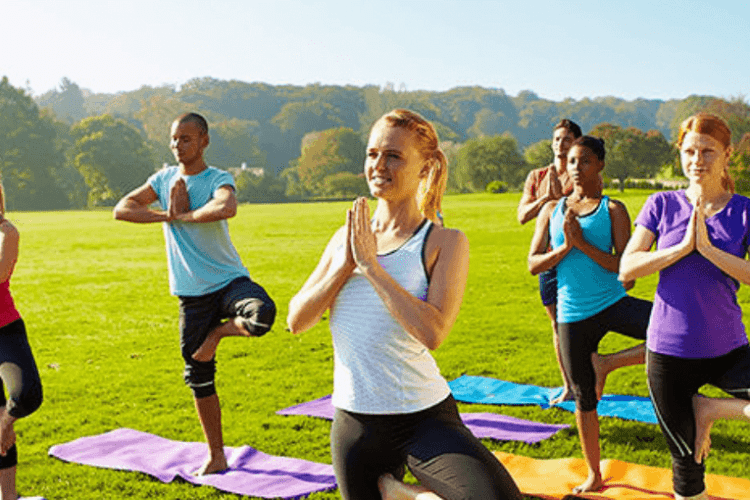How to Clean and Maintain Mini BMX Bike: My Experience
As a BMX rider and enthusiast, I’m always on the lookout for ways to improve my performance and prolong the life of my bike.
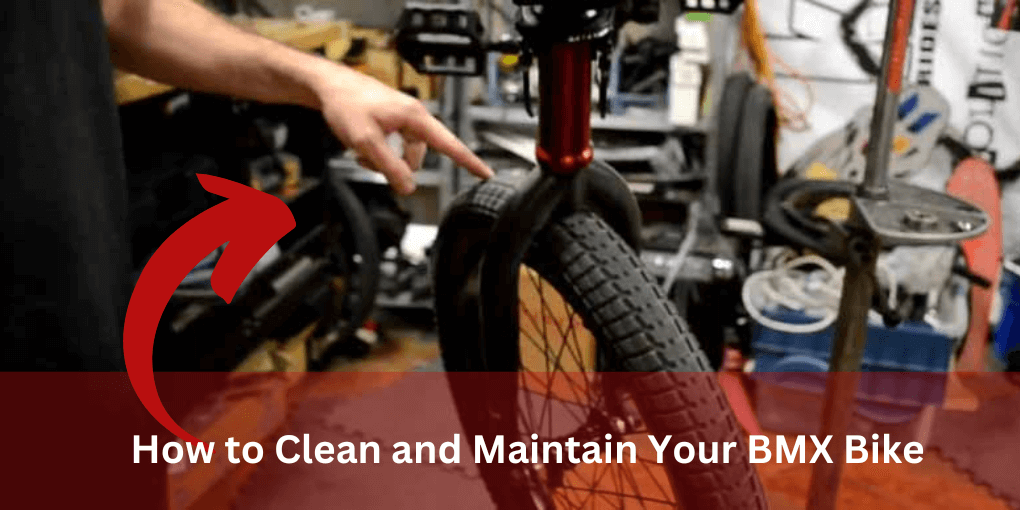
That’s why I’m excited to share with you the importance of regular bike maintenance, and how to clean a BMX bike.
Proper maintenance, cleaning, and inspection of the parts ensure a smooth and safe ride. With the right tools and a little bit of know-how, it’s easier than you might think.
In this guide, I’ll walk you through the steps I follow to keep my mini BMX bike in top shape. This article will help you maintain your bike for years, whether you’re an expert or a beginner. So let’s get started!
As a bike enthusiast, It is important to me to maintain the bike for both performance and longevity.
Proper care and upkeep make your bike smoother and faster. It also extends the lifespan of the bike. It also saves you time and money.
I’ve seen firsthand what neglecting maintenance can do to a bike. Chain lubrication, tire pressure, and bolt loosening may reduce performance and make riding unsafe.
So, taking the time to clean, oil, and check my bike has made it easier to ride, faster, and less likely to break down.
BMX bike maintenance may also detect issues before they become costly to remedy. Proactive maintenance saves money, reduces problems, and keeps you safe.
In short, regular maintenance is essential for any BMX rider. It maximizes their performance and enjoys their bike for years to come.
Don’t neglect your bike’s care – invest time and effort in maintaining it and you’ll reap the rewards
Cleaning and Maintenance Overview
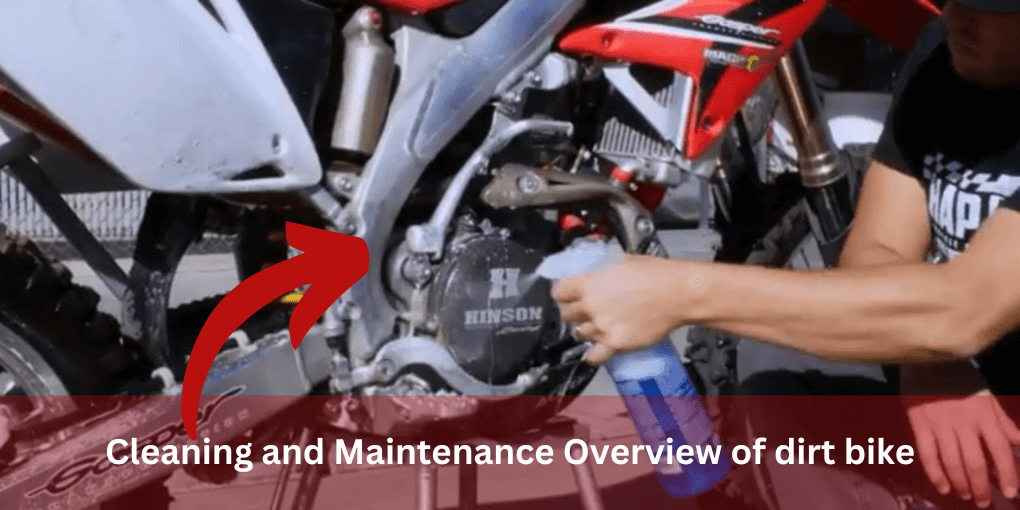
“Mini BMX bikes aren’t just for the skate park. They’re awesome for off-road adventures. I take mine on dirt trails, and the compact size adds a whole new dimension to my off-road BMX experience.“- Mia MicroMudMaster
I can tell you that keeping your bike in good condition requires more than just a quick wash every now and then. To clean and maintain the bike, it’s vital to follow a methodical and complete technique.
Clean, lubricate, examine, tighten, and store the bike often. By following these steps, the BMX bike can run safely and efficiently.
I clean and lubricate each of the parts of my bike. I also pay particular attention to the chain and other moving parts.
I also make sure to check for any loose or damaged parts. I also tighten bolts and spokes as necessary and replace worn or broken parts where needed.
Necessary Tools And Supplies
I make sure the necessary tools and supplies are on hand before starting any maintenance on my bike.
I usually have a few necessities in my toolbox. But the tools and materials depending on what types of tools you’re conducting.
Some of the essential tools and supplies I always have on hand include:
- Degreaser: To remove dirt and grime from the frame and components.
- Chain lubricant: To keep the chain moving smoothly.
- Soft cloth: To dry the bike after cleaning.
- Adjustable wrench or pliers: To tighten bolts and other fasteners.
- Tire pump: To inflate tires to the proper pressure.
- Bike cover or blanket: To protect the bike when stored.
These items make cleaning and maintenance simpler and faster. As you gain expertise in repairing your BMX bike, you may need more equipment or materials to do more complicated jobs.
Cleaning the Frame and Components
The first step in maintaining my bike is cleaning the frame and components. This removes dirt, grime, and other materials that might harm bike components and performance.
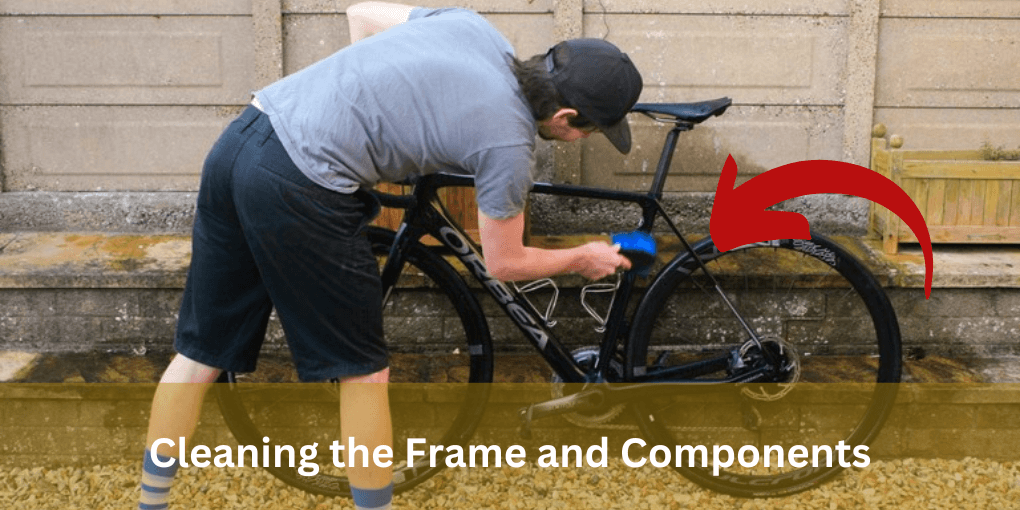
I start by using a degreaser to loosen and remove dirt and grime from the frame and components. I use a soft cloth to wipe down the bike and grime tends to build up, like the chain, sprockets, and pedals.
Some bike components are susceptible to strong cleaning solutions. So you have to be cautious while cleaning.
I always follow the instructions on the degreaser bottle and make sure to use a soft cloth. It won’t scratch the frame or components.
Once I’ve cleaned the bike, I take the time to inspect each component for any signs of wear or damage, like rust, cracks, or worn-out bearings.
If I find any problems, notice them and also take them to a professional mechanic.
Removing Dirt and Grime with a Degreaser
This step is important because dirt and grime can cause wear and tear on the bike’s parts. It also has a big impact on its performance.
I start by applying the degreaser to the frame and components. It is important to follow the instructions on the bottle.
I let the degreaser sit for a few minutes, which allowed it to loosen and remove the dirt and grime.
Next, I use a soft cloth to clean the bike’s chain, sprockets, and pedals. I pay extra attention to these areas, as they can be particularly susceptible to wear and tear.
I should avoid strong chemicals and abrasives when using a degreaser to protect the frame and components. If you’re not sure how to clean your bike, ask the manufacturer or a technician.
Rinsing the Bike with Water
After cleaning the frame and components, the next step is rinsing the bike with water.
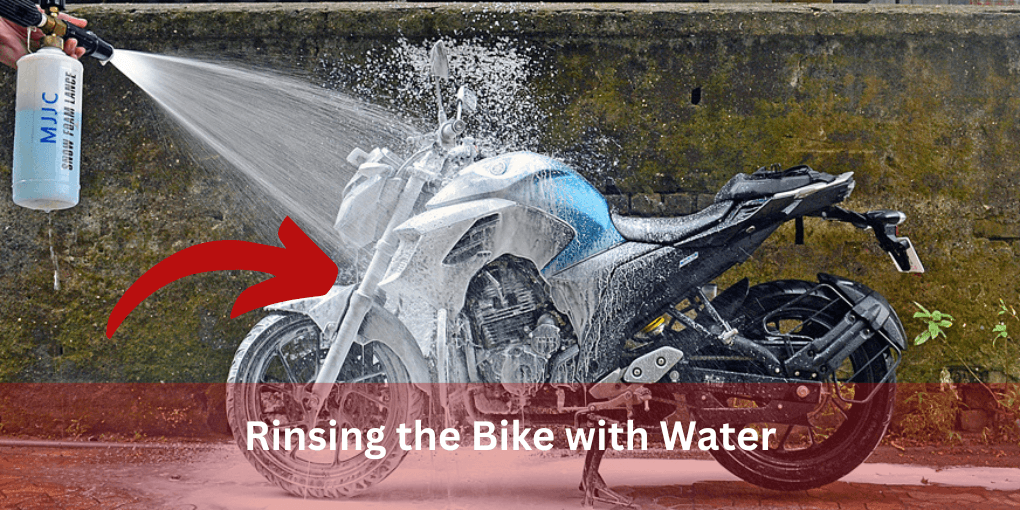
This step is important because it helps to remove any remaining dirt and grime, as well as any residue from the degreaser.
I rinse the bike using a hose or bucket, being careful to get the chain, sprockets, and pedals.
These areas can wear out quickly if not cleaned, so I pay special attention to them.
When rinsing the bike, it’s important to use cool or warm water. Because hot water can cause damage to some materials on the bike.
Drying the Bike with a Soft Cloth
This step is important because it helps to prevent rust and other forms of damage it can be caused by moisture.
I clean the bike with a hose or bucket to avoid getting any water on the pedals, sprockets, or chains.
I pay special attention to these areas because rust and other damage can occur if they’re not properly dried.
When drying the bike, it’s important to be gentle and avoid harsh chemicals or abrasive materials. Because it can damage the frame and components. And, if you’re unsure about the best way to clean your bike, consult with a professional mechanic.
Lubricating Moving Parts
One of the most important steps in maintaining my bike is lubricating the moving parts. It reduces friction and wears on the bike’s components, improving performance and lifespan.
I put a good bike lube on the chain, sprockets, and pedals, following the bottle’s directions. I make sure to reach all the links and moving parts, as well as any other areas that experience a lot of friction, like the bottom bracket and headset.
Use a bike-specific oil to avoid damaging components or affecting performance.
Types of Lubricants to Use
When it comes to lubricating my bike’s moving parts, I have a choice of different types of lubricants to use. Knowing which lubricant to choose can be important in ensuring that my bike is running smoothly, and efficiently.
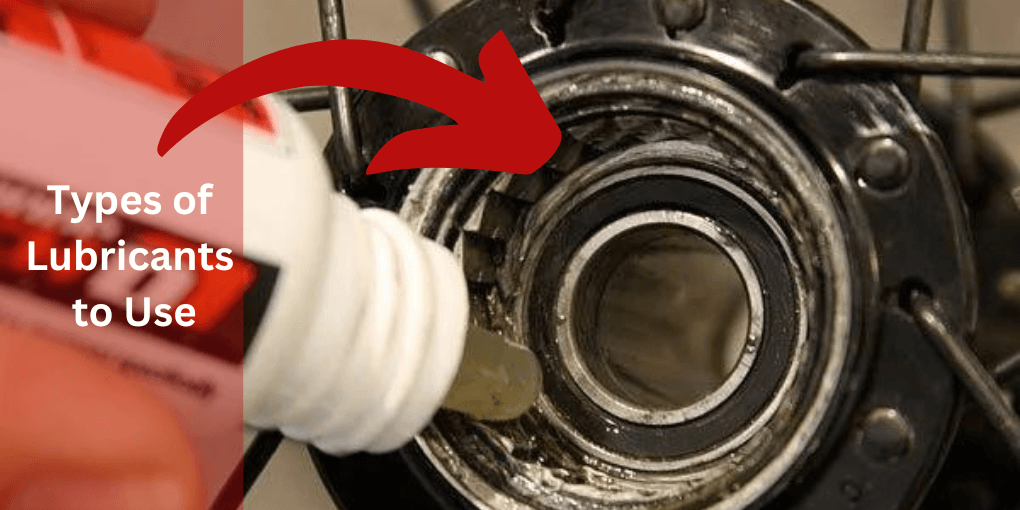
The most common types of bike lubricants include:
- Wet lubricants: These are heavy-duty lubricants designed for off-road riding and wet conditions.
- Dry lubricants: These are lighter lubricants designed for dry conditions and road riding.
- Chain lubes: These are chain-specific lubricants that are available in both wet and dry formulations.
It’s important to consider my bike’s riding conditions while picking a lubricant. I also consider the type of bike I have and the specific components that I need to lubricate, as some lubricants may not be suitable for some materials.
How to Lubricate the Chain and Other Parts
Lubricating the chain and other moving parts is a crucial step in maintaining my bike’s performance and longevity. Here’s how I go about it:
- Clean the parts: Before I lubricate the chain and other moving parts, I make sure to clean them using a degreaser and a soft cloth. This helps to remove any dirt and grime that can impact the effectiveness of the lubricant.
- Apply lubricant: I next add a high-quality bike lube to the chain, sprockets, and pedals, following the bottle’s directions. I make sure to reach all the links and moving parts, as well as any other areas that experience a lot of friction, like the bottom bracket and headset.
- Wipe excess lubricant: After using the lubricant, I wipe it off with a clean, soft cloth to avoid dirt and grime.
- Test for smoothness: I check the bike’s smoothness by peddling and adjusting gears.
Using a bike-specific lubricant helps prevent component damage and improve performance. And, if I’m unsure about the best way to lubricate my bike, it’s always a good idea to consult with a professional mechanic.
How Often to Lubricate
Knowing how often to lubricate my bike is key to ensuring its performance and longevity. Here’s what I keep in mind:
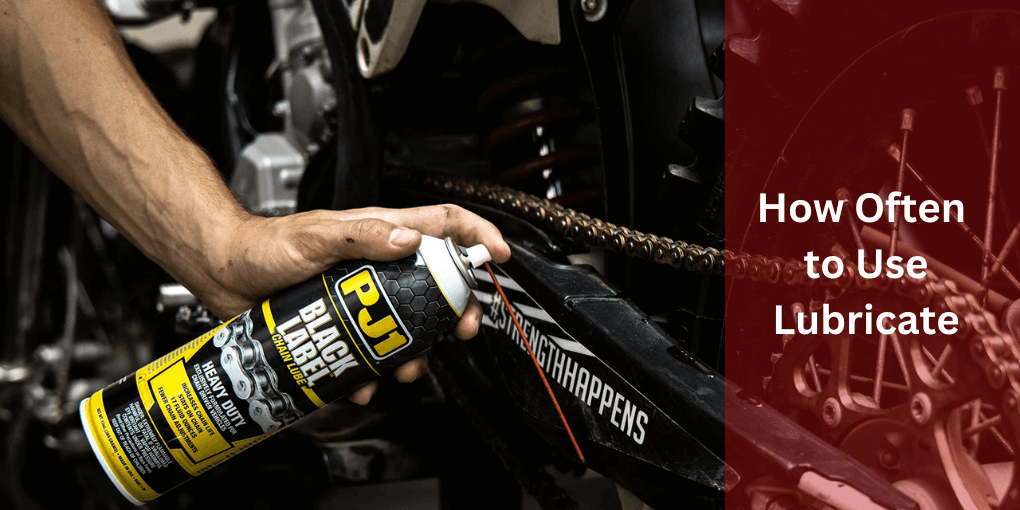
- Riding conditions: The frequency with which I lubricate my bike can depend on the conditions in which I ride. For example, if I ride in wet and muddy conditions, I may need to lubricate more frequently to prevent rust and corrosion. But, if I ride in dry conditions, I may be able to lubricate less frequently.
- Use: The frequency with which I lubricate my bike can also depend on how often I use it. If I ride every day, I may need to lubricate more frequently than if I only ride once a week.
- Type of lubricant: The type of lubricant that I use can also impact how often I need to lubricate. It’s crucial to pick a lubricant that suits my riding circumstances and bike usage since some last longer than others.
- Signs of wear: Another factor to consider is the signs of wear and tear that I observe on my bike. If I notice that the chain is starting to make noise, or if I see rust or corrosion on the components, it’s time to lubricate.
In general, I aim to lubricate my BMX bike every few rides, or at least once a month. By cleaning and maintaining my bike, I can avoid unexpected problems and keep it looking and running its best for years.
Inspecting and Tightening Parts
As a BMX rider, I need to check and tighten my bike’s parts regularly. Here’s how I do it:
- Check for loose bolts and nuts: I start by checking for any loose bolts or nuts, such as those on the handlebars, stem, seat, and pedals. If I find any, I tighten them using a wrench or pliers.
- Inspect the tires: Next, I inspect the tires, making sure that they are properly inflated and free of any cuts or punctures. I also check the sidewalls for any signs of wear or damage.
- Check the brakes: I also check the brakes, making sure that they are functioning and that the pads are not worn down too much. If I need to make adjustments or replace the brake pads, I do so.
- Test the gears: I then test the gears, making sure that they are shifting smoothly and that the chain is running properly. If I notice any issues, I make any necessary adjustments.
- Inspect the suspension: Finally, I check the suspension for leaks, forks, and shock absorbers. If I need to make any adjustments, I do so.
Checking for Loose or Damaged Parts
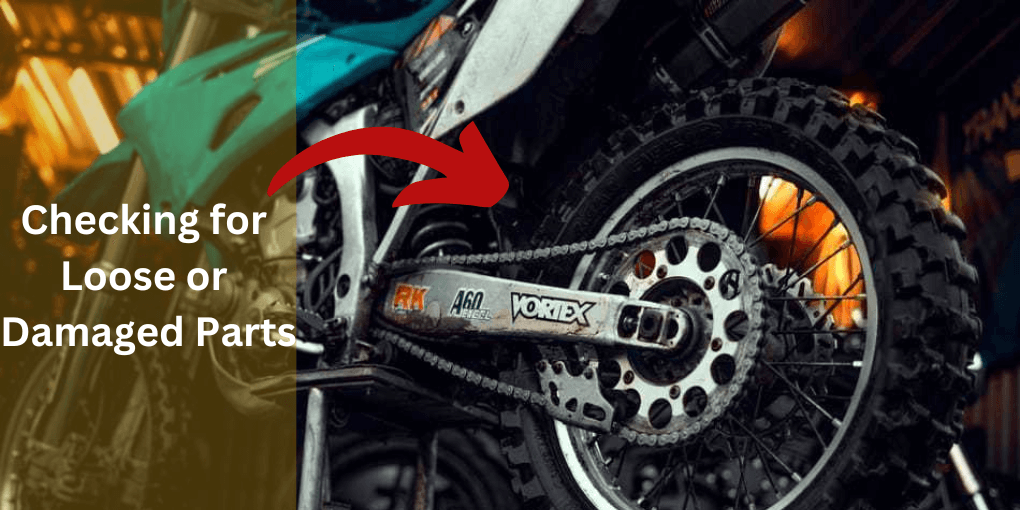
Checking for loose or damaged parts on my bike is an important step in maintaining its performance. I look for any bolts or nuts that are loose, such as on the handlebars, stem, seat, and pedals.
I also inspect the tires for cuts or punctures and check the brakes and gears to make sure they are working properly. By checking my bike regularly, I can identify and fix any issues before they become bigger problems.
Tightening Bolts, Spokes, and Other Fasteners
As a rider, tightening bolts, spokes, and other fasteners are a key part of maintaining my bike. I use a wrench or pliers to make sure all bolts are tight, especially on the handlebars, stem, seat, and pedals.
I also check the spokes on the wheels to make sure they are tight and not bent. By keeping all fasteners secure, I can ensure that my bike stays together and performs at its best.
Replacing Broken Parts
I know that replacing worn or broken parts are important for keeping my bike in good condition. When I inspect my bike, I look for parts that are worn out, such as brake pads, tires, or chains.
If I find any, I replace them with new parts to make sure my bike continues to perform well and ride smoothly. By keeping my bike in good condition, I can enjoy the ride for many years to come.
Maintaining Brakes and Tires
As a Bikes lover, maintaining my brakes and tires is crucial for safe and efficient riding. I regularly check the brake pads for wear and make sure they are not worn down too much.
I also inspect the tires for cuts or punctures and make sure they are properly inflated. By keeping my brakes and tires in good condition, I can feel confident and secure on my bike and avoid any accidents.
Checking Brake Pads and Replacing them as Needed
I know that having functioning brakes is essential for my safety. That’s why I make sure to regularly check my brake pads for wear.
If they’re worn down too much, I replace them with new ones to make sure my brakes are working properly. By doing this, I can ensure that I have the ability to stop my bike quickly and safely in any situation.
Inflating Tires to the Proper Pressure
I understand that having the right tire pressure is important for a smooth and efficient ride. That’s why I make sure to regularly check my tire pressure and inflate them to the proper level.
I use a tire gauge to get an accurate reading and make sure the pressure is within the recommended range. By keeping my tires at the right pressure, I can enjoy a better ride and avoid any potential flats or other issues.
Checking for Cuts or Damage on Tires
I know that even small cuts or damage on my tires can cause big problems while riding. That’s why I always check my tires for cuts or damage before each ride.
I inspect the sides and tread of the tires to make sure there’s no damage that could cause flat or other issues. If I find any cuts or damage, I replace the tire to ensure a safe and smooth ride. By taking care of my tires, I can enjoy my rides without any worries.
Storing Your Bike
I know that proper storage is important for keeping my bike in good condition.
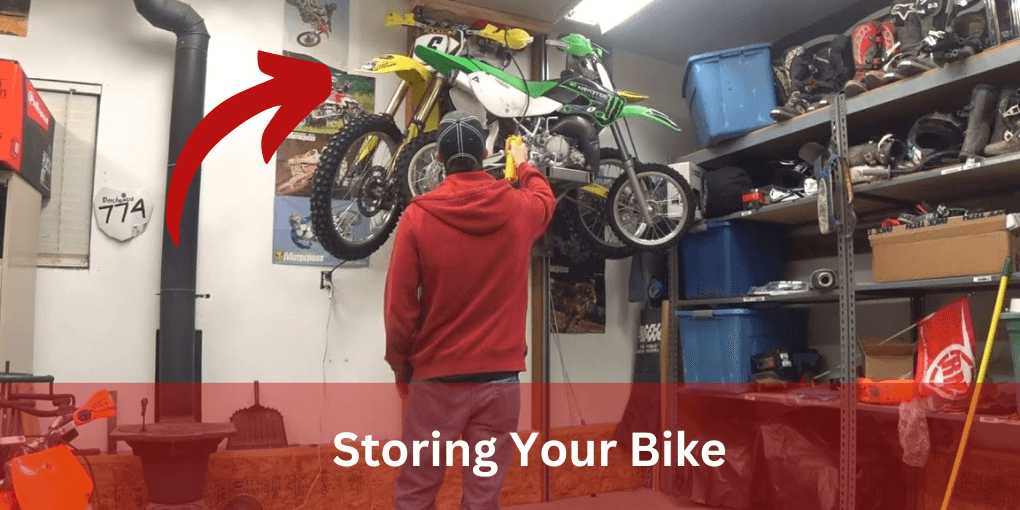
After each ride, I clean my bike and make sure it’s dry before storing it. I store my bike in a cool, dry place, away from direct sunlight and moisture.
By storing my bike correctly, I can avoid rust, corrosion, and other damage, and ensure it’s ready for my next ride.
Cleaning the Bike after Use
I know that cleaning my bike after each use is important for its longevity and performance. After each ride, I take a few minutes to clean off any dirt, grime, or mud that may have accumulated on my bike during the ride.
I use a degreaser to remove any built-up dirt and grime, and then rinse my bike with water. I make sure to dry my bike with a soft cloth so that it’s ready for my next ride. By cleaning my bike regularly, I can keep it looking good and performing at its best.
Storing in a Dry Place
I know that proper storage is important to prevent rust and other damage to my bike. After each ride, I clean and dry my bike, and then store it in a dry place. I make sure to keep it away from moisture and humidity, which can cause rust and corrosion.
Protecting the Bike with a Cover
I know that protecting my bike from dust and other elements is important for its longevity. When I’m not riding, I cover my bike with a cover or blanket to keep it protected. I make sure that the cover or blanket is clean and dry so that it doesn’t scratch or damage my bike.
I also keep the cover or blanket away from moisture, which can cause mold or mildew to form. By protecting my bike with a cover or blanket, I can keep it looking good and ready for my next ride.
Conclusion
I know how important it is to properly clean and maintain my bike. I clean, lubricate, examine, and tighten parts, maintain brakes and tires, store my bike in a dry spot, and cover or blanket it to keep it in excellent shape.
By following these steps, I can ensure that my bike performs at its best and lasts for many years to come. Maintaining my BMX bike is not only important for its performance, but also for my own safety. I highly recommend that all BMX riders take the time to properly care for their bikes.
Recap of BMX Bike Cleaning and Maintenance
I have learned the importance of regularly cleaning and maintaining my bike to keep it in top condition. Here’s a quick recap of the steps I follow:
- Get the things you need, like a degreaser, water, a soft cloth, lubricant, and a cover or blanket.
- Use a degreaser to remove dirt and grime from the frame and parts, then rinse with water and dry with a soft cloth.
- Use the right lubricant on moving parts, like the chain and others moving parts.
- Check for loose or broken parts, and tighten bolts, spokes, and other fasteners.
- the brake pads for wear, make sure the tires
By following these steps, I can keep my BMX bike running smoothly and enjoy it for many rides to come.
Ensuring Regular Maintenance
I can attest to the importance of regular maintenance for my bike. Not only does it ensure that my bike performs well on the track, but it also extends the life of my bike. By keeping my bike clean and well-lubricated, I can avoid costly repairs or replacements in the long run.
I also check for loose parts, tighten bolts, and repair brakes and tires to spot problems early and keep my bike running safely.
In short, regular maintenance is a crucial aspect of owning a BMX bike, and I can’t stress enough how important it is to make it a part of your routine.
Seek Professional Help
As someone who has been riding BMX for a while, I understand that some tasks can be complicated and time-consuming. And while I have learned a lot through my own experience, I also know that there are times when it’s best to seek professional help.
If you’re unsure about how to properly clean or maintain your BMX bike, don’t hesitate to reach out to a bike mechanic. They can answer any questions you may have, and help ensure that your bike is in top condition.
After all, it’s better to be safe than sorry when it comes to your BMX bike. And if you do decide to seek professional help, rest assured that it will be worth the investment in the long run.
FAQs
To keep your Mini BMX Bike looking cool, use a damp cloth to wipe off dirt and mud after your rides. Cleaning it regularly helps it stay shiny and awesome!
While it's super fun to ride in the rain, try to avoid it because water can make your bike rusty. If it gets wet, wipe it dry as soon as you can and store it in a dry place.
Yes! Check your tires to make sure they're pumped up and not too soft. Properly inflated tires help you ride smoothly and do awesome tricks with ease.
Give your chain some love! Add a bit of bike chain oil every few weeks to keep it running smoothly. A happy chain makes your bike ride super smoothly.
Absolutely! Check if any bolts are loose and give them a little tightening. Ask a grown-up for help if needed. This keeps everything secure for your fantastic rides!


